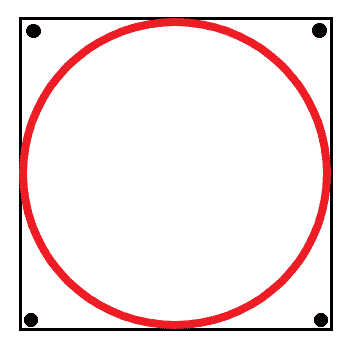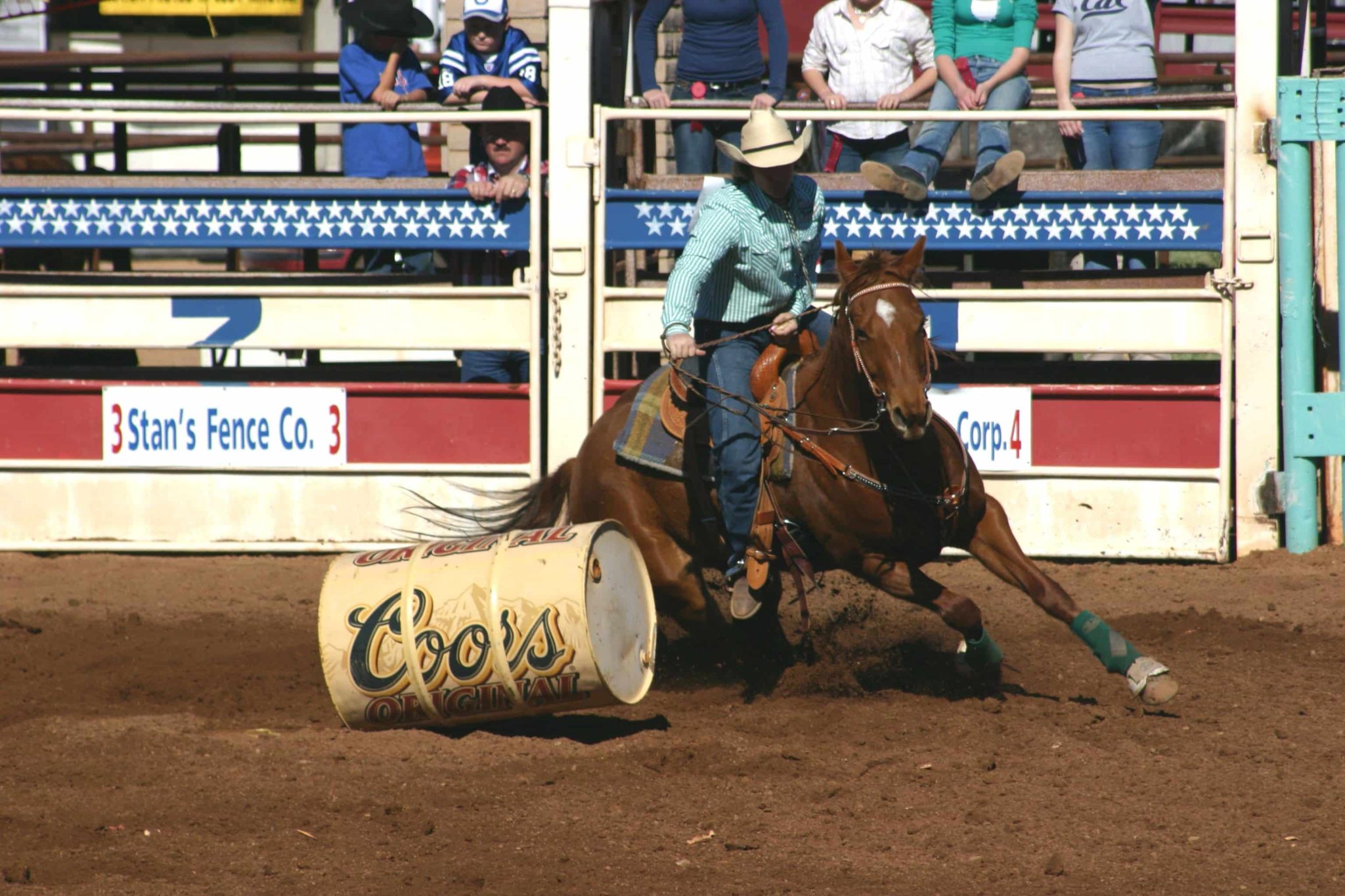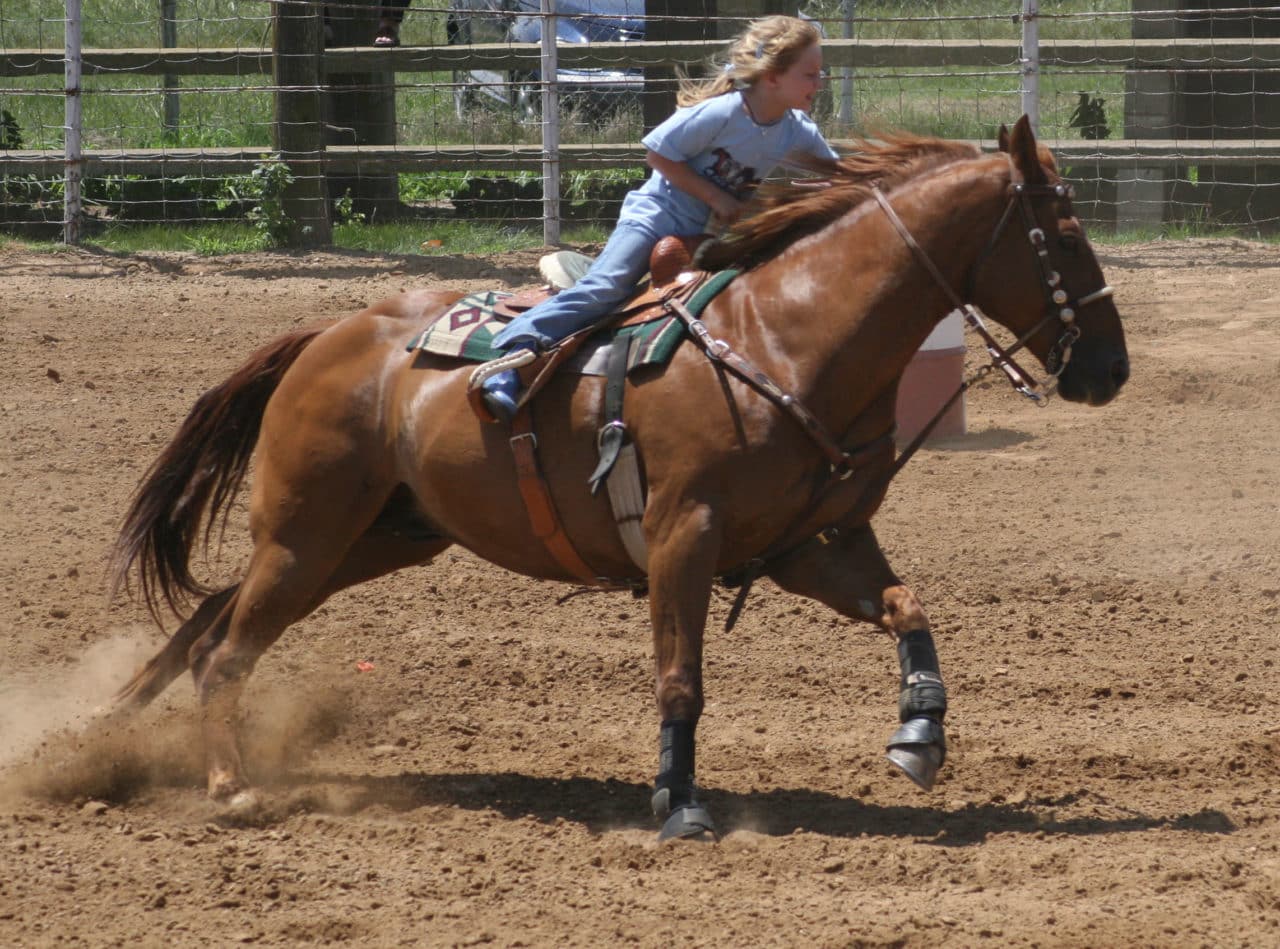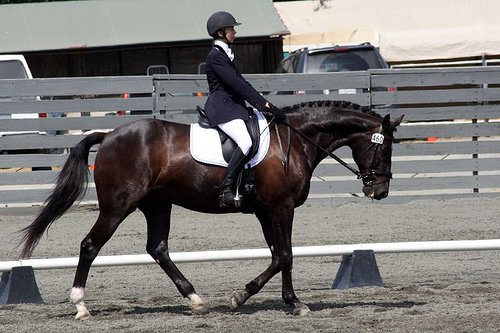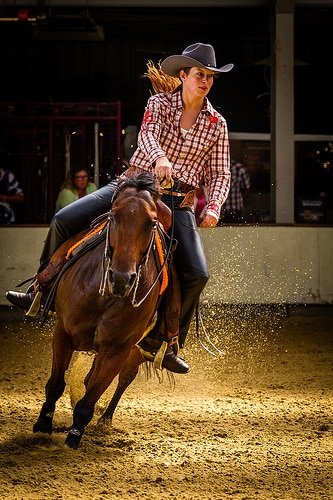

Lead changes are a vital component of all disciplines; from dressage to barrel racing, show jumping to reining. Every discipline aspires to perfect this seemingly simple maneuver.
What are lead changes?
To answer this question, we must first answer; what is a lead? The canter is a three-beat gait. The footfall pattern when circling to the right should be left hind, right hind, left fore (almost at the same time), right foreleg . When circling right, the right legs (both fore and hind) will be reaching further forward. These legs contacting the ground push the horse forward, creating a moment of suspension. The left lead is simply the exact opposite.
Generally, lead are decided by the direction of travel. If you circle to the right, you take the right lead. If you circle to the left, you take the left lead. When riding in a straight line, you can theoretically take either lead, but you generally choose according to which way you are going to turn at the end of the line. However, there is also the counter canter where you take the opposite lead from normal, but that is a discussion for another day.
Flying vs Simple Lead Changes
Simple lead changes are slightly easier as they allow the competitor to drop to the jog for one to two strides in order to change leads. Extra steps in the trot are usually penalized.
A flying lead change does not allow for any break of gait to facilitate the change. Horse are allowed to — even expected to — collect the canter without breaking gait in order to change. However, slowing down too much, especially in the high levels of competition, can result in penalties.
Secrets of Success for Simple Lead Changes
1. Solid downward and upward transitions between the jog and the lope
In order to score full marks on any lead changes, the change must be smooth. A simple lead change especially depends on the downward and upward transitions between the jog and the lope. Having a rough downward transition will throw both you and the horse off balance, forcing you to take and extra stride or two to get back into position to prepare for the upward transition into the opposite lead. These precious seconds cost you points every time due to the extra strides as many associations limit the amount of strides you are allowed to take in a simple change to two — three at most. Even if you do make the change within the stride limit, an ugly change with rough transitions will not be credit earning and you will still lose valuable points.
2. Don’t try to get fancy
If the pattern explicitly calls for a simple change, do a simple change. Don’t get fancy and throw in a flying change thinking it will get you bonus points. Some judges may go so far as to mark you off pattern because you did not do what the pattern asked for. That can result in a disqualification. Do exactly what the pattern asks for, nothing more and nothing less. If, however, the pattern asks for a simple change or a flying change, do whichever one you are better at. A smooth simple change will earn more points than a rough flying change.
3. Set up for success
Start setting your horse up at least five strides before the change. Be thinking about setting your horse up ten strides before the change. This way both you and your horse have plenty of warning and are not rushing through the change and losing points for a sloppy lead change.
Secrets of Success for Flying Lead Changes
1. Don’t rush
Flying lead changes can be intimidating. It is common to get tense and worried. Don’t. Tension leads to rushing which leads to a sloppy change. Sloppy lead changes lose valuable points. take your time. Practice at home until you and your horse are comfortable enough with the flying change to keep cool during a competition. Consider sticking with the simple change for a few extra shows until you feel confident enough to do the flying change.
2. Set your horse up for success
Just like with the simple change, start setting your horse up five stride before the change. But, make sure you’re thinking about setting your horse up ten strides before the change. Give you and your horse plenty of time to prepare. Breath. Relax. Have confidence in your training and preparation.
3. Don’t push your horse before he is ready
Flying lead changes are very difficult for a horse. Your horse must be in top fitness condition with solid simple lead changes already in place before attempting flying lead changes. He must also be mentally and physically mature. Never attempt a flying lead change on a horse under 5-years-old. Yes, I know, I’m bucking industry standard by saying that. But attempting a flying lead change on a horse that isn’t done growing yet is asking for soundness issues. Better to wait a little long and preserve his long term soundness then push too soon and blow him out too early.
Cover Photo by Edward Dalmulder






